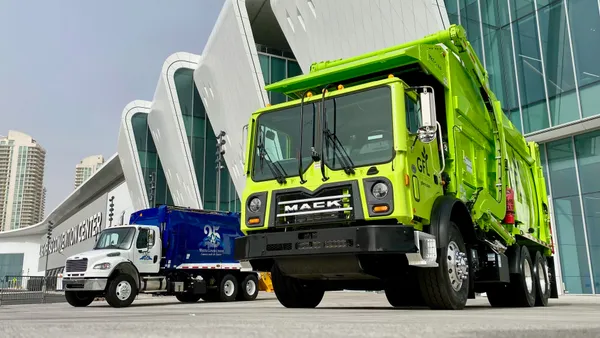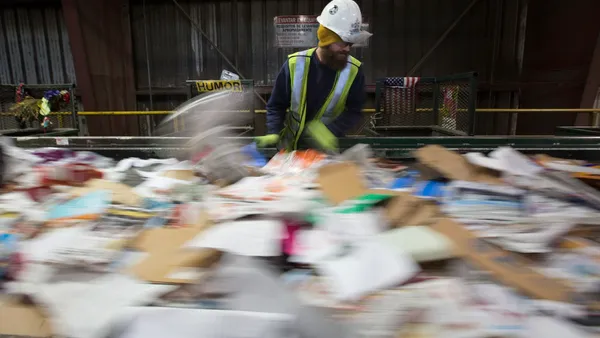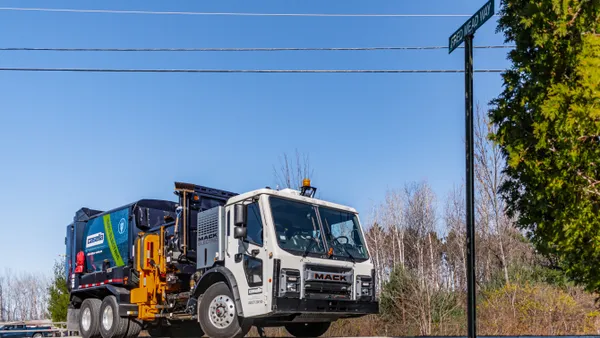Dive Brief:
- Recology has completed a three-year, $14 million upgrade of Recycle Central, its largest MRF in San Francisco, according to a company newsletter. The 200,000-square-foot Pier 96 facility is now home to seven optical sorters, including three new state-of-the-art Pellenc ST units from France.
- The company also finished a $19 million expansion of its transfer station in December; the new West Wing, according to Recology, will increase daily collection capacity for food and yard waste from 750 tons per day to more than 1,000.
- Beyond technical upgrades, Recology noted that it had strengthened relationships "with both domestic and foreign mills" and increased volumes via increased community outreach throughout 2018.
Dive Insight:
While China's scrap import policies have many cities scaling back on recycling programs, San Francisco is leaning into the challenge. Recology began installing a new sorting system — complete with feeding systems, the longest initial sort deck in North America and a new machine to separate cardboard from other recyclables — in 2016. Further upgrades were made in an effort to meet new quality standards, culminating with the recent additions from Pellenc.
In an interview with Waste Dive, Recology Public Relations Manager Robert Reed described these French sorters as "state of the art — they have wider belts, can run at higher speeds, separate materials into three different types and can be programed to target different materials." The ultimate goal, according to Reed, is to reduce impurities in finished bales to 1-1.5% — contamination levels which, while still above China's 0.5% cutoff, would still be among the lowest any MRF has claimed to achieve in the U.S.
Recology has also increased its focus on residential recycling at the consumer level; in addition to updating its complement of lid stickers, it delivered 58,000 larger recycling carts (64 gallons) and 54,000 refuse carts (16 gallons) to residential properties this past year. The push stems from a set of 2017 city decisions to expand the list of accepted materials for recycling while simultaneously shrinking refuse carts and adjusting monthly collection rates.
This bin effort, according to Recology, has yielded positive results: recyclables collected are up 9%, compostables are up 2% and landfill-bound refuse is down 6%. The initiative has been accompanied by expanded community outreach and education efforts — Recology's new Better At The Bin microsite, for instance, features recycling statistics, videos, consumer tips and more.
"We're doing a lot of community meetings and community presentations," Reed told Waste Dive. "We have very creative and engaging recycling messages going out on social media. We're doing digital advertising campaigns. We're touring 4,000 students a years. We're wrapping trucks with recycling messages. We’re writing articles that are going out in newsletters to our customers that highlight reasons to compost and recycle, and offer simple tips on how to not produce so many plastics."
"We did a lot in the past," he noted. "But now we’re doing even more."













